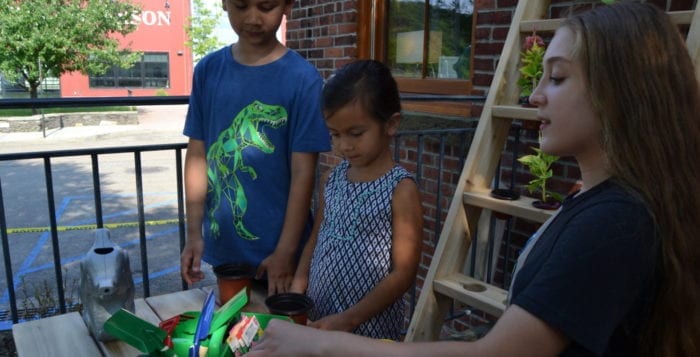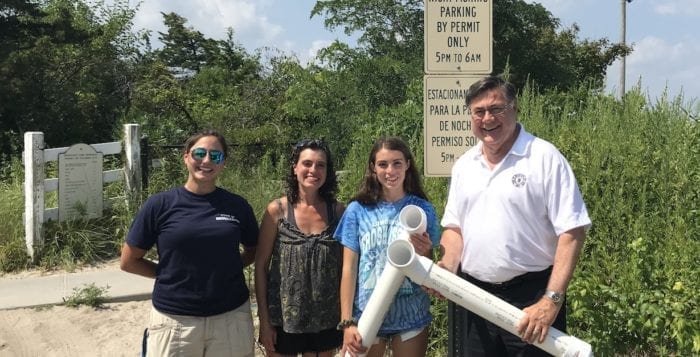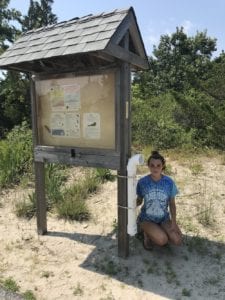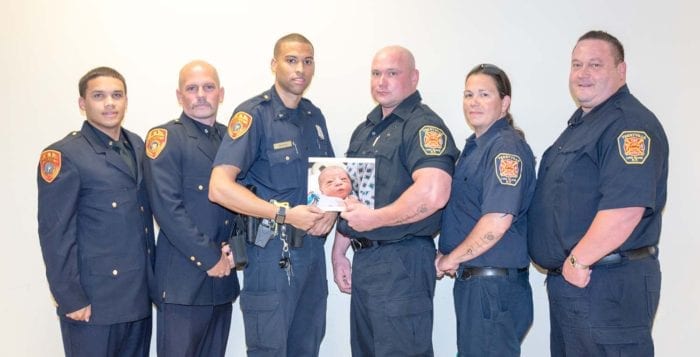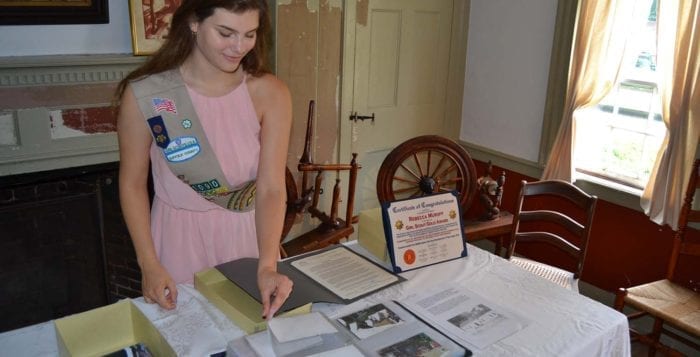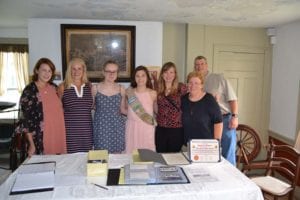Port Jefferson’s most inquisitive young explorers will have a new, sustainably minded activity to learn from thanks to the efforts of one of their own.
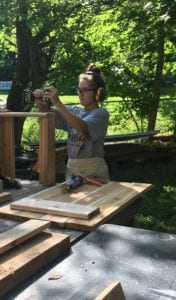 Girl Scouts looking to achieve their Gold Award, the highest honor a Girl Scout can earn, are tasked with identifying an issue in their community, conducting research, pitching a project and shepherding it to completion in a leadership role in the hopes of achieving some greater good for the community.
Girl Scouts looking to achieve their Gold Award, the highest honor a Girl Scout can earn, are tasked with identifying an issue in their community, conducting research, pitching a project and shepherding it to completion in a leadership role in the hopes of achieving some greater good for the community.
Girl Scout Devin Rotunno, a Port Jeff resident heading into her senior year at Earl L. Vandermeulen High School, decided to achieve her Gold Award by building a station where kids can plant locally native vegetation at the Long Island Explorium, a Port Jeff museum located at 101 E. Broadway dedicated to fostering an environment of learning and discovery for visitors of all ages, where Rotunno has volunteered for years. She dropped off and set up the project with help from her parents Aug. 10.
“When I started here early last year in 2017, we felt the programing here has always been about STEM [science, technology, engineering and mathematics], and we wanted children, guests and visitors not only to know STEM for the knowledge of STEM, but really the civic component of it, like, ‘What’s the big deal about learning about science, technology, engineering and math?’” said Angeline Judex, executive director of the Explorium. “The civic component is obviously our interaction and our relationship with the world and our environment surrounding us. I’ve been trying to infuse some sort of sustainability type programing and I think this was something that we thought was perfect.”
Rotunno’s project was built from common cedar wood and includes a laddered portion where kids can keep and monitor their plants as they grow, as well as a station to plant seeds, equipped with soil and gardening tools. She credited a family friend and contractor for helping with the design and lending his shop and tools for the cause.
 “I love it here so much, and as my Gold Award project was approaching I thought it would be the perfect place to dedicate my Gold project to,” Rotunno said of the Explorium. She reflected on providing a new program for kids now in the position she used to be in, visiting the museum to enjoy activities it had to offer. “It’s awesome, just the feeling — since I’m going off to college in a year, the fact I can leave something they can use forever — it’s just a good feeling I can give back.”
“I love it here so much, and as my Gold Award project was approaching I thought it would be the perfect place to dedicate my Gold project to,” Rotunno said of the Explorium. She reflected on providing a new program for kids now in the position she used to be in, visiting the museum to enjoy activities it had to offer. “It’s awesome, just the feeling — since I’m going off to college in a year, the fact I can leave something they can use forever — it’s just a good feeling I can give back.”
Carol Van Duyn, the museum’s manager who has been there for 13 years, reflected on the full-
circle nature of Rotunno’s time at the Explorium.
“Many of the children that came to join and participate in the interactive exhibits continued and then they became volunteers, and then came to us to ask us if they could do something to leave their mark, and we were thrilled,” she said. “She [Rotunno] kept redesigning and reconfiguring, coming back to remeasure before she made her final cut. So, this was a work in progress for a number of months.”
Rotunno’s mom, Jennifer, who also served as Girl Scout Troop 2988 leader since her daughter was in kindergarten, shared her feelings about witnessing the culmination of the long process for her Scout daughter.
“It’s awesome, I’m very proud,” she said. “I’m proud that she’s been a Girl Scout all these years. It’s not common for a girl to make it to this age and to this award. It’s a really special thing. She’s loved coming down here and volunteering.”
All photos by Alex Petroski

